Indie games aside, most multiplatform games don't get developed with the Nintendo Switch as the lead platform. The PC, PS4/PS5, and Xbox One/Series X are the main focuses due to their increased power, and Switch games may run on the system, but it never feels like it produces anything better than passable. The few times that big developers targeted the Switch as the main platform, the results were mixed for everyone else. Games like Monster Hunter Rise ran great on the Switch and even better on other platforms, while Sonic Frontiers felt like performance was being left on the table when it ran on the other platforms. Prince of Persia: The Lost Crown marks another game from a big publisher that was developed first for the Switch and then ported to other platforms. While it comes as no surprise that the game ran well on other systems, it should also be no surprise that Ubisoft knows how to make the Switch sing.
The story isn't tied to any of the previous games, and it even changes some expectations. You play as Sargon, the youngest member of a group of Persia's heroes known as The Immortals. After saving the kingdom from invasion, you arrive at the palace ready to celebrate after receiving your honors. The celebration doesn't start, as the Prince of Persia is abducted by your mentor. The group gives chase, and the trail ends at Mount Qaf, a former capital that has become the site of a strange mystery. Your mission to rescue the Prince is now more complicated, as you have to solve the mystery of the ruins or get out before things get worse.
The story is fine. The paths to the end are predictable enough, but it still plays out well thanks to the visited locales in Mount Qaf, which include open courtyards, caves, and frozen ship battles. It's exciting to see where the tale will lead. If there is a weakness with the story, it's in the missed opportunities at fleshing out its cast of characters. Some get some decent backstories, but many don't go anywhere. Some people who seem important show up briefly and are promptly forgotten. It's a shame since each character looks like they have intriguing stories.
The Lost Crown falls squarely in the Metroidvania subgenre of action-adventure games, which means that there are some gameplay mechanics that act as its pillars. The first of those is combat, which is a huge improvement when compared to past Prince of Persia games. You start with dual swords and the ability to parry hits and some projectiles. Simple multi-hit combos are already at your disposal, as are things like a launching strike, vertical stabbing, and kick combos. Eventually, you gain things like arrows and a chakram, but perhaps the most powerful weapon comes from abilities powered by Athra, a sort of mana that is built up by combat. Your first power is a drilling attack, but you soon learn abilities like producing a healing field or shooting a large arrow.
In a word, the combat is fantastic. The window for parrying is generous, and the graphical flourishes are loud and distinct. The parry is versatile enough to be useful in so many fights, but it also feels optional since you can survive a good deal of bouts without learning how to parry. Actual combat is fast thanks to the execution of multiple swings, and the versatility of the full arsenal means that combat never feels boring. Boss fights remain exciting because of what you can perform and what the enemy can do, and even regular fights are encounters you'll gladly undertake.
One of the more interesting aspects of the combat is how it breaks away from Metroidvania tradition. In games of this genre, you either start out as a weak character or a very strong one before succumbing to something that takes away your powers. In both cases, you'll eventually get strong enough to take on all enemies with a myriad of powers. The Lost Crown starts you from a point of strength but never takes away anything. You feel powerful at the start of the game, and you only get better once you find more powers and tools. It is a very welcome difference compared to others in the genre, and fans will appreciate it.
Platforming is solid, which is expected considering how the older games in the series were known for it. Like combat, the game starts off with a fairly robust set of platforming moves, including wall jumping, sliding and dashing on the ground, and swinging on poles. Once you discover new abilities, you'll be more robust in traversal, as you get higher jumps, multiple air dashes, and the ability to cling to sand waterfalls. You'll also get time-related abilities, like entering a new dimension to avoid obstacles or making a clone of yourself to perform tasks in tandem — or retreat when things get hairy.
The best part of the platforming is that it feels precise. There's never a moment when it feels like you need to fight the controls to pull off any moves. It feels almost effortless to pull off death-defying moves in rooms full of spikes and other traps. You'll need skill to get this done, but the barrier to pull off cool-looking moves is lower than in similar titles.
The crisp platforming and various abilities work very well with the game's newfound sense of exploration. As in any good Metroidvania title, there are a good number of ingenious puzzles that use your movement abilities and combat tools, and the world is littered with plenty of areas to divert you from the main path, often resulting in a number of good prizes for your effort.
The game doesn't mess with the established formula, but it does something interesting with its Memory Shard ability. You gain the ability very early on, and while it has unlimited uses if you pick up old shards, it allows you to take photos of your current location so you can remember the obstacle or treasure. Considering how the Switch allows you to take screenshots and video clips, this feature might not seem like a big deal, but that changes once you realize that you can pin these screenshots on the in-game map instead of returning to the Switch's home screen, opening the Photos app, and waiting for pics to load. This process feels more streamlined and is a real game-changer that other Metroidvania-style games should borrow.
All of this is tied together with notable quality of life options that ensure you'll see the game's ending. Combat has variable presets, but you can also create a custom version to give yourself a bigger parry window or negate the loss of Athra over time. If your platforming skills aren't up to snuff, you can bypass the difficult sections, but it only applies to areas that are essential for the main storyline, so you'll still need some platforming prowess if you're going after the optional stuff. You can also modify the general navigation elements so you'll get a subtle guide to the next checkpoint or hints about areas that you can't traverse yet.
The Rayman team is behind the title, so it's no surprise that the presentation is stellar. The graphics don't have an animated look, but they have flourishes, such as action lines for some of the cut scenes and bright flashes when you parry or get hit. The character designs are a tad exaggerated but are welcome in an era where realism is expected from a big publisher. The varied biomes stand out more, with their excellent use of colors that prevent places from looking too dour. Animations are absolutely smooth, and the focus on getting this to work well on the Switch means that accomplishing at least 60fps is absolutely achievable on low-end hardware. The sound is on a similar level of quality as well. The soundtrack does an excellent job of keeping an adventurous vibe, and while the voice work is decidedly English instead of featuring people with more Persian accents, their performances are still excellent.
Ubisoft is a big studio known for pulling out the best from the Switch, and Prince of Persia: The Lost Crown fully solidifies its status. Load times are only a second or two longer than on the PC. The graphics in docked mode go for the full 1080p and 720p in handheld. In both cases, the frame rate is locked to 60fps in every gameplay situation, with drops only occurring during in-game cut scenes featuring lots of people and particle effects. Even then, the drops to 30fps only last for a second or two before returning to 60fps. Due to the art style, the textures look great, with shadows and close-ups of details during some cut scenes being a few places where the texture fidelity is a touch below that of other platforms.
Prince of Persia: The Lost Crown is a great game and a nice pivot for the dormant series. The combat is enjoyable, and the crisp controls translate well to platforming that requires a good deal of skill to master but rarely devolves into frustration. The puzzles do an excellent job of being tricky but satisfying to solve. You can still point at a few flaws, like the fact that the story is standard, but those are minor nitpicks that don't stop the game from being worthy of a classic adventure fan's library. For Switch owners, The Lost Crown shows how much power there is to tap in Nintendo's portable console.
Score: 9.0/10
More articles about Prince Of Persia: The Lost Crown


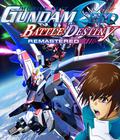
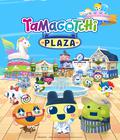
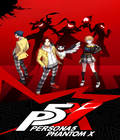
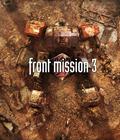
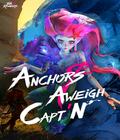
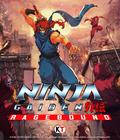
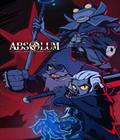


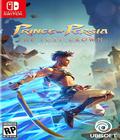 Prince of Persia: The Lost Crown is an action-adventure platformer game set in a mythological Persian world.
Prince of Persia: The Lost Crown is an action-adventure platformer game set in a mythological Persian world.




























